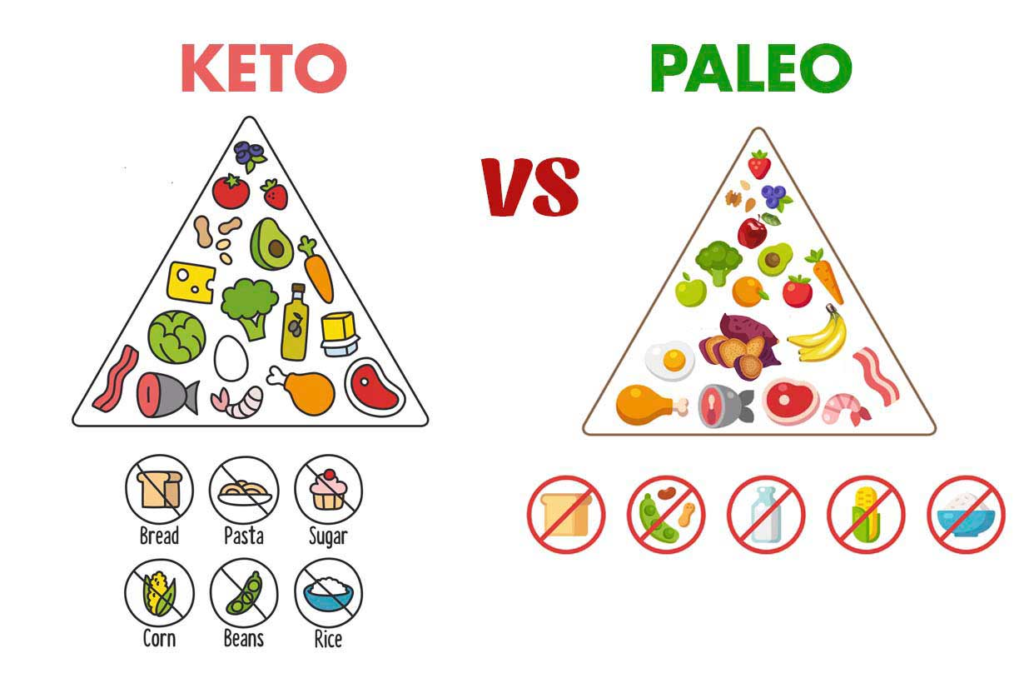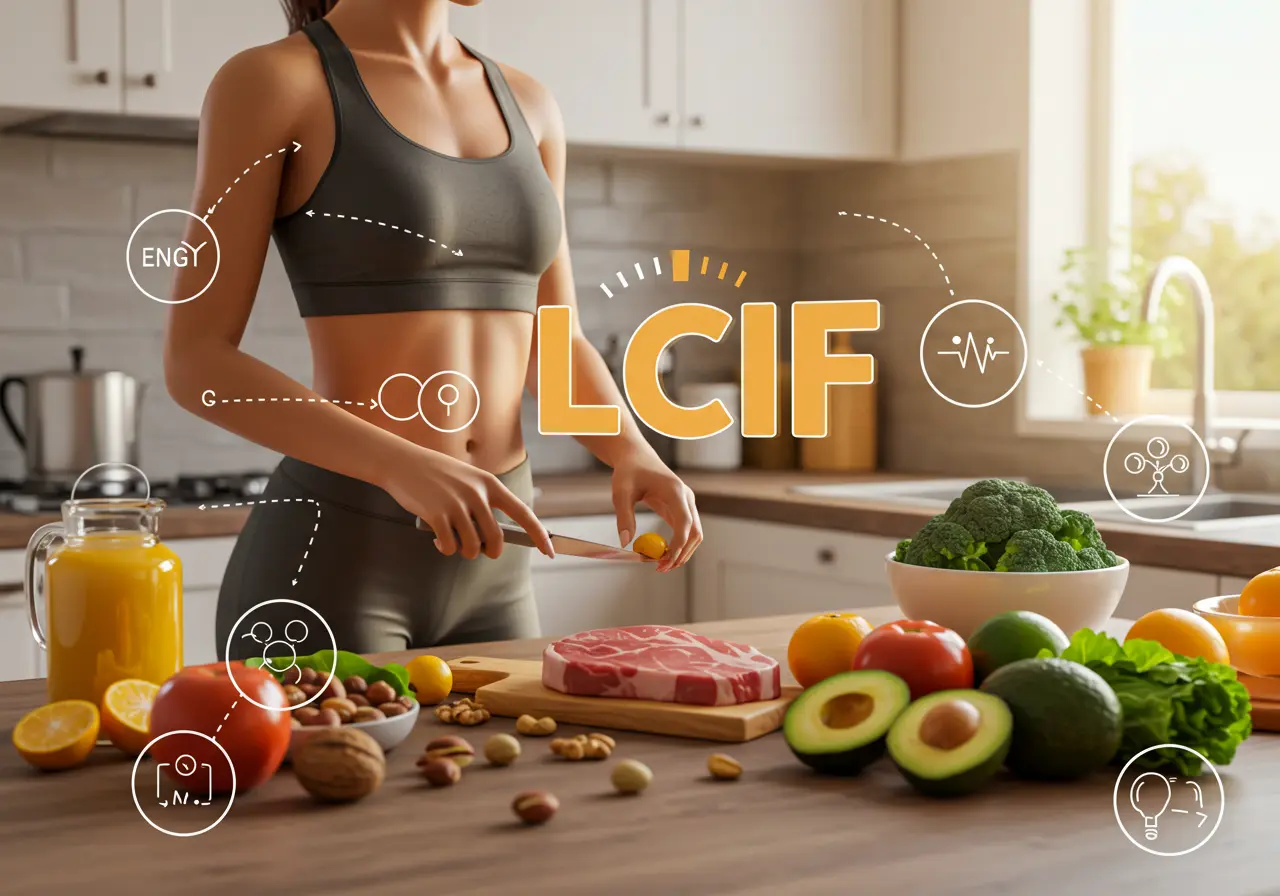Battle of the Diets: Keto or Paleo? – Which One is Right for You?
So, are you deciding between the Keto or Paleo diets? Uncover the ultimate showdown between these diets – find out which one will transform your life!
Table of Contents
- What is the Keto Diet?
- What is the Paleo Diet?
- Comparing the Keto and Paleo Diets
- Success Stories and Expert Opinions
- Making an Informed Decision
- Conclusion
Curious about the differences between the Keto and Paleo diets? You’re not alone! These two dietary approaches have gained significant popularity in recent years, each with its own set of rules, benefits, and followers. In this blog post, we’ll take a closer look at the key differences between Keto and Paleo, explore the foods allowed on each diet, compare their effectiveness, and help you decide which one may be the best fit for your lifestyle and health goals.
What is the Keto Diet?
If you’ve been hearing a lot about the Keto diet lately, you’re not alone. This high-fat, low-carb diet has gained a massive following for its ability to promote weight loss and improve overall health. The Keto diet focuses on drastically reducing carbohydrate intake and increasing fat consumption, putting the body in a state of ketosis, where it burns fat for fuel.
Keto-Friendly Foods
On the Keto diet, you’ll find yourself indulging in:
- Avocados
- Nuts and seeds
- Meat and fish
- Healthy oils like olive and coconut oil
- Low-carb vegetables
However, you’ll need to avoid high-carb foods like:
- Bread and pasta
- Sugary treats
- Starchy vegetables
Craving Bread on Keto? Try Keto Breads! 🍞

If you miss bread on your keto journey, check out Keto Breads — a book packed with nearly 40 grain-free, low-carb bread recipes that taste just like the real thing!
Some common misconceptions about the Keto diet include the idea that it’s all about eating bacon and butter all day. In reality, a well-rounded Keto diet emphasizes a variety of nutrient-dense foods to support overall health and well-being.
What is the Paleo Diet?
The Paleo diet takes a different approach to healthy eating, focusing on whole, unprocessed foods that mimic what our ancestors might have eaten. Also known as the “caveman diet,” Paleo encourages followers to consume lean proteins, fruits, vegetables, nuts, and seeds while avoiding grains, dairy, and processed foods.
Paleo-Friendly Foods
On the Paleo diet, you can enjoy:
- Lean meats
- Fish
- Fruits and vegetables
- Nuts and seeds
You’ll need to eliminate modern processed foods, including:
- Grains
- Dairy
- Processed foods
- Legumes
By eliminating modern foods that can cause inflammation and digestive issues, the Paleo diet aims to improve overall health and support weight loss. This approach emphasizes the importance of eating nutrient-dense foods that our bodies were designed to digest and utilize efficiently.
Some misconceptions about the Paleo diet include the belief that it’s all about eating huge amounts of meat or that it’s too restrictive to be sustainable. In reality, the Paleo diet can be adapted to meet individual needs and preferences while still promoting optimal health.
Discover the key differences between #Keto and #Paleo diets to find the one that aligns best with your health and wellness goals! [insert link] #diet #healthymeals
Keto or Paleo: Key Differences

While both diets emphasize whole, unprocessed foods and share some similarities, they differ significantly in their approach to macronutrients:
| Feature | Keto Diet | Paleo Diet |
|---|---|---|
| Carb Intake | Very low Typically below 50g per day) to maintain ketosis | Moderate Allows for more carbohydrates from natural sources like fruits and root vegetables. |
| Fat Intake | High 70-80% of daily calories, relying on fats as the primary energy source | Moderate Promotes moderate fat intake, focusing on healthy fats from nuts, seeds, and animal sources. |
| Protein Intake | Moderate to high Allows moderate protein intake but discourages excessive protein, as it can be converted into glucose | High Encourages higher protein consumption from lean meats and seafood |
| Allowed Foods | Healthy fats, meats, dairy (in moderation), nuts, seeds, low-carb veggies | Lean meats, fish, fruits, vegetables, nuts, seeds |
| Restricted Foods | Grains, sugar, most fruits, starchy vegetables | Grains, dairy, processed foods, legumes |
| Weight Loss Benefits | Rapid fat-burning due to ketosis | Sustainable weight loss through whole-food eating |
| Sustainability | Can be challenging long-term due to carb restrictions | Easier to maintain with whole-food flexibility |
The Keto diet is highly effective for those looking to lose weight quickly and manage conditions like type 2 diabetes, while the Paleo diet provides a more balanced approach to long-term health and wellness.
Love Desserts? Enjoy Them on Keto! 🍰

You don’t have to give up sweet treats! Get Keto Desserts — a book with 55+ grain-free, low-carb dessert recipes that taste just like traditional treats!
Success Stories and Expert Opinions
Many people have seen life-changing results from both diets. Keto followers often report dramatic weight loss, increased energy levels, and improved mental clarity. Meanwhile, Paleo enthusiasts highlight benefits such as reduced inflammation, better digestion, and long-term weight management.
Experts emphasize that the success of either diet depends on individual health goals. Dr. Dominic D’Agostino, a researcher in ketogenic diets, highlights Keto’s potential benefits for metabolic health and cognitive function. For instance, in a discussion, Dr. D’Agostino explores how ketones affect exercise performance, reduce inflammation, and improve neurological health.
Watch this insightful video about Keto & Paleo diets:
On the other hand, Dr. Loren Cordain, founder of the Paleo movement, argues that the Paleo diet is optimal for long-term health and digestion. In his book, “The Paleo Diet: Lose Weight and Get Healthy by Eating the Food You Were Designed to Eat,” Dr. Cordain demonstrates how consuming lean meats, fish, fresh fruits, and non-starchy vegetables can aid in weight loss and prevent various illnesses.
Real-life testimonials show that both diets can work, but the key to success is choosing the one that aligns best with your health goals and lifestyle.
Making an Informed Decision
Choosing between Keto or Paleo depends on your health objectives:
✔️ If you want rapid weight loss and better blood sugar control → Keto might be the best choice.
✔️ If you prioritize gut health, digestion, and overall nutrient intake → Paleo may be the better fit.
✔️ If sustainability is a concern → Paleo tends to be easier to maintain long-term since it allows more food variety.
Ultimately, experimenting with both diets and listening to your body is the best approach. You may even find that a modified version of either diet works best for you!
Want Quick & Easy Keto Meals? 🍲

The Instant Pot Keto Solution makes keto meal prep effortless! Save time in the kitchen while enjoying delicious, low-carb meals!
the Keto Solution consists of a comprehensive Quick Start Guide, 28-Day Keto Meal Plan, Recipe Module, Detailed Shopping Lists, Nutrition Module, Keto Diet Food List and two bonus recipe books, covering Comfort Foods & Smoothies.
Conclusion: Should you go for Keto or Paleo?
Both Keto and Paleo have their advantages, and the best choice depends on your personal health goals and lifestyle. If you’re looking for rapid fat loss and metabolic benefits, Keto could be your best bet. However, if you prefer a more balanced, whole-food approach that supports digestion and long-term health, Paleo might be the way to go.
Whether you go for the Keto or Paleo diet, prioritizing high-quality, unprocessed foods is key. Ready to take the next step? Check out our Beginner’s Guide to Healthy Meal Planning to help you stay on track!
Which diet do you prefer – Keto or Paleo? Share your thoughts in the comments below!





One thought on “Battle of the Diets: Keto or Paleo?”